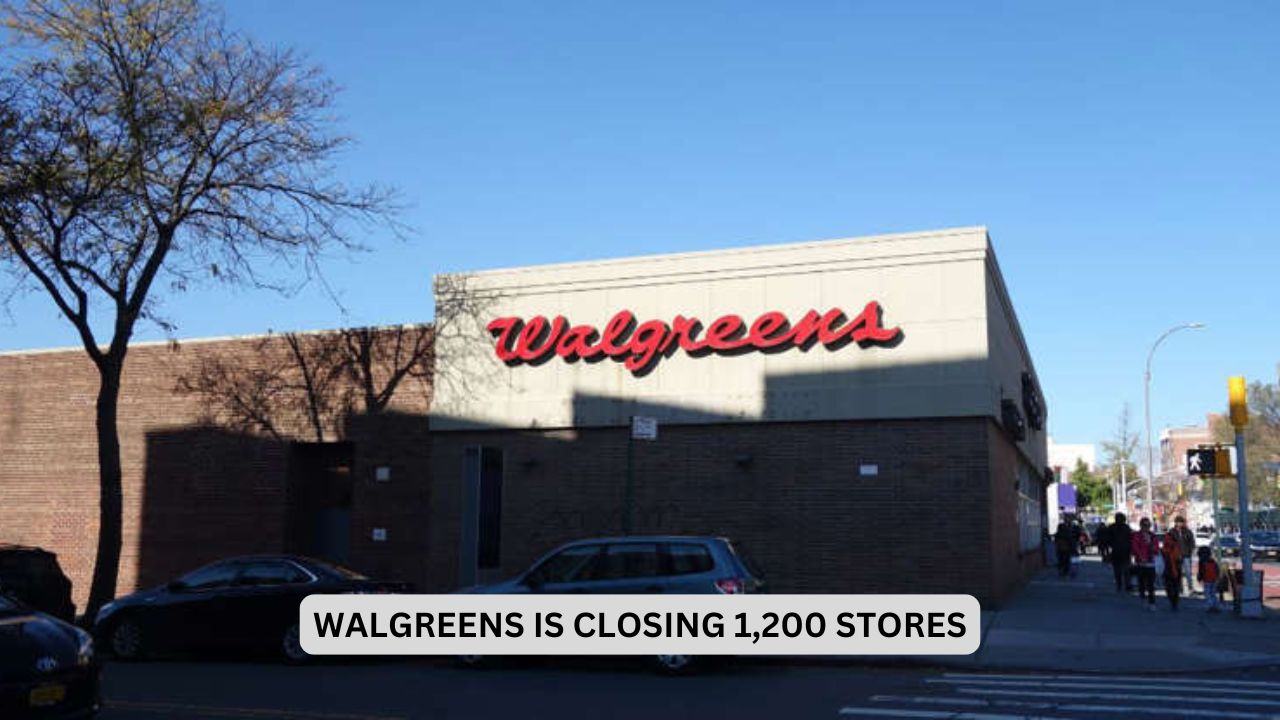Walgreens, one of the nation’s largest pharmacy chains, is set to close 1,200 stores across the U.S. over the next three years. This sweeping move affects about 13% of its total locations and marks one of the biggest pharmacy closures in recent memory.
It’s all part of a broader restructuring strategy aimed at boosting profitability and adapting to shifting consumer habits. Walgreens leadership cited financial pressure and changing market trends as the key reasons behind the decision.
As the news spreads, customers and employees alike are anxiously waiting to learn which locations in their communities will be affected.
Why Walgreens Is Closing So Many Stores
Walgreens’ decision to shut down 1,200 locations comes from a mix of financial and market challenges. The company has seen profits fall as competition from online giants like Amazon and rivals like CVS and Walmart heats up. Rising costs, fluctuating prescription reimbursement rates, and the lingering effects of the COVID-19 pandemic have also taken a toll.
Adding to the financial strain are opioid litigation settlements. To stay competitive, Walgreens plans to close underperforming stores, cut costs, and shift resources toward higher-performing locations with better growth prospects.
Which Stores Are Closing First?
Walgreens hasn’t released a full list of the stores set to shut down just yet, but closures are already scheduled to begin in early 2025. Initial shutdowns will likely hit major cities like San Francisco, Chicago, and New York City, where a number of struggling stores have been identified.
Smaller towns and rural areas could also feel the impact, especially where foot traffic has declined. Walgreens plans to roll out closures in phases and will alert customers and staff in advance. If you depend on a specific Walgreens, it’s a good idea to stay updated through official channels.
The Impact on Local Communities
These store closures are expected to hit many local communities hard, particularly in underserved or rural regions. Walgreens isn’t just a pharmacy—it’s a one-stop shop for groceries, household items, and basic health services.
Shutting down these locations raises concerns about creating “pharmacy deserts,” or areas where people have limited access to prescriptions and healthcare. This could especially hurt seniors, people with disabilities, and anyone lacking reliable transportation.
Community leaders are asking Walgreens to consider the broader impact and work with local officials to find alternatives for affected areas.
What This Means for Employees
The closures will also directly affect thousands of Walgreens workers. While the company says it aims to transfer as many employees as possible, layoffs are expected—particularly in areas facing multiple closures. The uncertainty has left many longtime staff members feeling anxious.
Walgreens has committed to offering severance packages and help with job placement for those who lose their roles. Still, with the job market for retail pharmacy employees tightening, many will face a tough road ahead.
Competitors Facing Similar Challenges
Walgreens isn’t the only one feeling the squeeze. Rivals like CVS and Rite Aid have also faced similar struggles. Back in November 2021, CVS announced plans to shut down around 900 stores over three years. More recently, in October 2023, Rite Aid filed for Chapter 11 bankruptcy.
The entire retail pharmacy industry is battling rising costs, slimmer margins, and growing demand for online and mail-order services. Companies are now rethinking their physical store strategies and ramping up investments in digital health platforms to remain viable.
How Store Closures Are Decided
Walgreens uses several factors to determine which stores to close. These include store performance, lease terms, competition with nearby Walgreens locations, and local market trends. Stores that consistently underperform or are in areas with shrinking populations are more likely to close.
The company says it’s doing its best to reduce disruption and that the closures are part of a “footprint optimization program.” The goal is to focus on locations that are most profitable and best positioned for long-term success.
The Future of Pharmacy Access
As Walgreens shutters hundreds of stores, many are worried about how this will affect access to pharmacies across the country. In rural and lower-income urban areas, the loss of a nearby pharmacy can mean longer trips just to fill a prescription.
These longer travel times may lead to delays in taking medications and poorer health outcomes, especially for vulnerable populations. Health advocates are calling for expanded investment in telepharmacy, mail-order options, and local health programs to help bridge the gap. Walgreens says it’s working to grow its digital services, but that may not help people who rely on face-to-face assistance or who don’t have stable internet access.
Financial Outlook for Walgreens
Despite the disruptions, Walgreens executives believe the store closures will strengthen the company’s finances. By eliminating struggling locations and making operations more efficient, the company hopes to boost earnings, improve cash flow, and expand into new healthcare offerings.
Walgreens has seen some positive results recently, with revenue and adjusted earnings beating Wall Street’s expectations. Still, the company’s stock price remains under pressure, as investors worry about long-term growth. Everyone—from analysts to employees to customers—will be watching closely to see how Walgreens handles this transition.
Is Your Local Store on the List?
With 1,200 closures on the horizon, customers everywhere are wondering if their Walgreens is at risk. The company plans to share the closure list in stages and will notify communities and staff in advance.
To stay informed, check Walgreens’ official site, local news, and in-store announcements. If your nearby store is closing, Walgreens will provide guidance on how to transfer prescriptions and where to go for continued service. Keeping up with these updates can help ensure you don’t lose access to the medications and support you rely on.
This article has been carefully fact-checked by our editorial team to ensure accuracy and eliminate any misleading information. We are committed to maintaining the highest standards of integrity in our content.

Outside of work, he enjoys playing chess, following cricket, and writing short stories. His commitment to integrity and in-depth analysis strengthens OTE News’ mission of providing trustworthy journalism.



